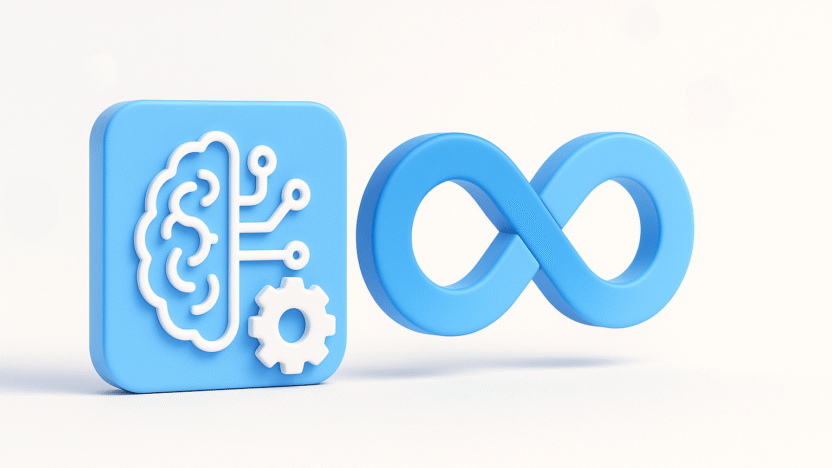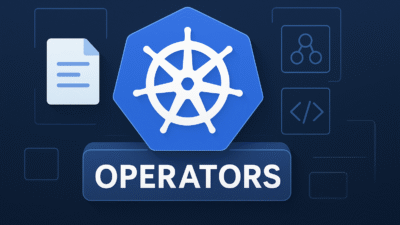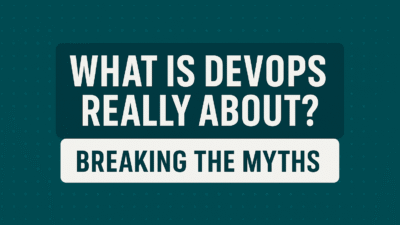Introduction: The Shift from Hype to Real Value
Generative AI has moved fast — from impressive demos and viral headlines to genuinely useful tools that are transforming industries. For DevOps, a domain grounded in automation, scalability, and rapid iteration, the rise of Generative AI offers both excitement and skepticism.
But here’s the real story: Generative AI is no longer just a buzzword. It’s becoming an integral part of the DevOps toolkit, offering powerful assistance across development, deployment, monitoring, and even security.
In this post, we break down how Generative AI is being used in real-world DevOps workflows — not in theory, but in practice.
🚀 What Is Generative AI in the Context of DevOps?
Generative AI refers to models like GPT-4, Claude, or CodeWhisperer that can generate content — including code, documentation, tests, logs, configuration files, and even infrastructure definitions — based on patterns learned from massive datasets.
In DevOps, this capability translates into:
- Faster development and automation
- Smarter troubleshooting and debugging
- Predictive infrastructure scaling
- Code generation and refactoring
- Security rule creation and anomaly detection
🧠 Real-World Use Cases of Generative AI in DevOps
Let’s move from concepts to actual deployments. Here are eight key areas where Generative AI is providing real value in DevOps environments today:
1. 🤖 AI-Powered Infrastructure-as-Code (IaC) Generation
Instead of writing Terraform or CloudFormation scripts from scratch, DevOps engineers are using tools like ChatGPT or GitHub Copilot to:
- Generate boilerplate IaC templates
- Validate resource definitions
- Convert between IaC tools (e.g., Pulumi to Terraform)
Example:
Prompt to AI: “Generate a secure S3 bucket in Terraform with logging and versioning enabled.”
Time saved: Hours of documentation browsing and trial-and-error
2. 🧪 Test Automation and CI/CD Pipeline Generation
Writing unit, integration, and smoke tests is often tedious. Generative AI can:
- Suggest test cases based on source code
- Create YAML configuration files for Jenkins, GitHub Actions, or GitLab
- Auto-document CI/CD pipelines for compliance
Example:
Use AI to convert a basic shell script into a reusable GitHub Actions workflow in seconds.
3. 🧩 Code Review & Pull Request Suggestions
Large teams rely on PR reviews to maintain code quality. AI copilots can now:
- Automatically comment on anti-patterns
- Suggest code fixes inline
- Flag potential security vulnerabilities
- Enforce style guides and formatting rules
Tooling:
GitHub Copilot, Amazon CodeWhisperer, and CodiumAI are popular here.
4. 📈 Intelligent Monitoring and Log Analysis
AI-driven tools can process massive volumes of log and telemetry data to:
- Summarize incident logs
- Suggest root causes
- Recommend fixes
- Detect anomalies early
Real-World Tool Examples:
- PagerDuty’s AI Ops auto-summarizes incidents
- Datadog’s AI Notebooks give contextual analysis of logs and metrics
- OpenAI plugins integrate with monitoring dashboards for chat-based observability
5. ⚙️ Auto-Tuning and Optimization of CI/CD Pipelines
CI/CD failures due to timeout, resource limits, or flaky tests can cost thousands in lost productivity.
AI agents can now:
- Analyze failed builds
- Recommend resource or timeout tweaks
- Spot flaky tests and auto-quarantine them
- Suggest parallelization to speed up pipelines
Result: Continuous pipelines become faster, more stable, and self-healing.
6. 🛡️ Enhancing DevSecOps with AI-Generated Policies
Security teams use AI to:
- Write OPA/Rego policies for Kubernetes admission controllers
- Generate fine-grained IAM policies
- Detect secrets in repos and suggest redaction or rotation
- Summarize vulnerability scan reports
Example:
Prompting an AI model:
“Generate a least-privilege IAM policy for an S3 backup service in AWS.”
7. 📚 Automating DevOps Documentation
From runbooks to architecture diagrams, documentation often lags behind.
Generative AI helps by:
- Creating runbooks from logs and chat history
- Generating Markdown READMEs for services
- Explaining Kubernetes manifests in plain English
- Updating Confluence pages based on Git history
Pro tip: AI + version control = always-updated documentation 🔁
8. 🧠 Autonomous DevOps Agents for Repetitive Tasks
Advanced teams are now experimenting with AI agents that can:
- Create a new microservice boilerplate
- Set up DNS records and TLS certs
- Create GitHub repos with branch protections
- Handle support tickets that involve infrastructure actions
These agents can use APIs from tools like Terraform, GitHub, AWS CLI, and others — acting like “junior SREs.”
Caution: Guardrails and audit logs are essential to avoid mistakes.
🔧 DevOps Tools That Now Include Generative AI
Here’s a look at some DevOps tools and platforms integrating GenAI:
| Tool / Platform | GenAI Feature | Use Case |
|---|---|---|
| GitHub Copilot | Code suggestions, PR generation | Faster development |
| AWS CodeWhisperer | Code & security suggestions | DevSecOps |
| Atlassian Compass + AI | Docs, runbooks, chat summaries | SRE onboarding |
| Datadog AI Notebooks | Log summarization | Observability |
| PagerDuty AI Ops | Incident summarization | Incident response |
| Terraform with LLM | IaC generation & explanation | IaC automation |
🌐 Integration in Real DevOps Pipelines
Case Study 1: A FinTech Strtup
Uses GPT-4 to:
- Generate unit test cases for every service PR
- Summarize monitoring alerts and push them to Slack with suggested responses
Case Study 2: Global SaaS Company
Adopted a “ChatOps” approach using LLMs:
- Ask ChatGPT via Slack: “Rollback last deploy on staging”
- Behind the scenes, it triggers Jenkins or ArgoCD pipelines
🧱 Challenges and Limitations
While promising, using Generative AI in DevOps has some caveats:
- Hallucinated code or commands — especially dangerous in production
- Security risks — generated secrets, unverified code
- Context limitations — AI may not fully “understand” system dependencies
- Compliance — human oversight required for audits and change approvals
📊 Future Trends to Watch
- Autonomous CI/CD Agents:
Fully automated deploy-repair workflows guided by LLMs - AI-Native DevOps Platforms:
Cloud providers baking AI into native DevOps stacks - Context-Aware AI Tooling:
Better integrations with APIs, logs, and system state - Human + AI Collaboration Models:
AI as a co-pilot, not a replacement
Conclusion: It’s Time to Move from Hype to Help
Generative AI in DevOps is not science fiction anymore. It’s already making workflows faster, smarter, and more scalable — when applied thoughtfully.
While it’s not here to replace DevOps engineers, it’s definitely here to augment them. The most successful teams in 2025 will be those who embrace GenAI as a partner in their pipelines — one that helps reduce toil, catch errors early, and speed up innovation.
🔄 What You Can Do Next
- ✅ Start small: Use AI to generate IaC or CI/CD snippets
- 🧪 Run experiments: Automate a low-risk pipeline or log summary
- 🔐 Define security guardrails for AI usage
- 💬 Collaborate with AI copilots as part of your daily routine





